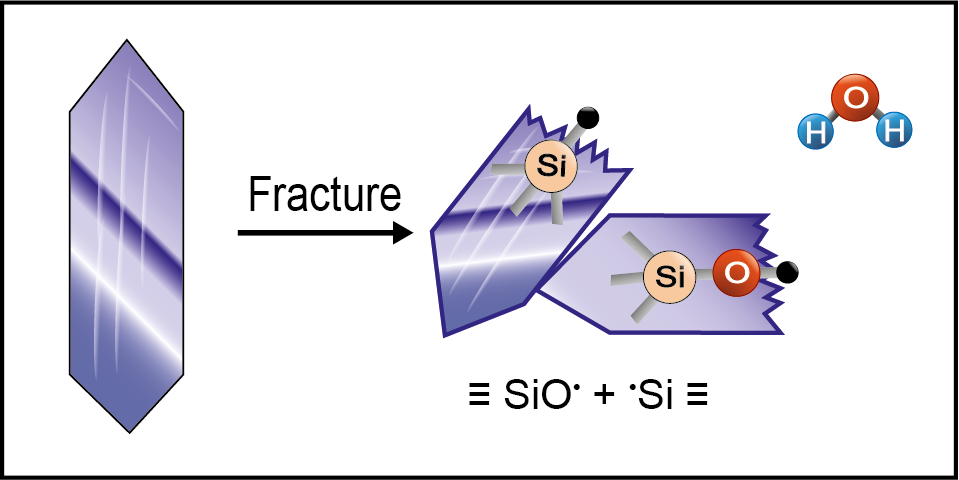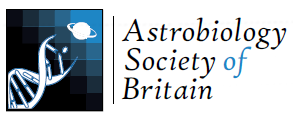Mineral Surfaces
The fracturing of silicate minerals leads to the mechanical cleaving of covalent bonds and the generation of reactive mineral surfaces. Certain modern industrial processes utilise mechanical ‘activation’ to increase production rates and lower the temperature of solid-state reactions (Berbenni et al., 2003). Reactive oxygen species (ROS) can form at these activated surfaces. Mineral surface – water reactions have been suggested as a source of hydrogen in fault zones (Kita et al., 1982) and in sub-glacial environments; potentially supporting life and biodiversity during extended global glaciations (Telling et al., 2015). Hydrogen peroxide (H2O2) is generated in appreciable quantities from the reaction of crushed basalts with liquid Water (Hurowitz et al., 2007). Further to this, hydroxyl radicals (•OH) can be generated upon contact of abraded silicates with water which has likely contributed to the high reactivity of the Martian regolith (Bak et al., 2017). The abiotic emission of nitrous oxide from hypersaline Antarctic ponds indicate unexpected and extensive links between the geosphere and atmosphere.(Samarkin, Madigan et al. 2010).

Bak, E.N., Zafirov, K., Merrison, J.P., Jensen, S.J.K., Nørnberg, P., Gunnlaugsson, H.P. and Finster, K. (2017) 'Production of reactive oxygen species from abraded silicates. Implications for the reactivity of the martian soil', Earth and Planetary Science Letters, 473, pp. 113-121
Berbenni, V., Marini, A., Matteazzi, P., Ricceri, R. and Welham, N. (2003) 'Solid-state formation of lithium ferrites from mechanicallyactivated Li2CO3–Fe2O3 mixtures', Journal of the European Ceramic Society, 23(3), pp. 527-536
Kita, I., Matsuo, S. and Wakita, H. (1982) 'H2 generation by reaction between H2O and crushed rock: An experimental study on H2 degassing from the active fault zone', Journal of Geophysical Research: Solid Earth, 87(B13), pp. 10789-10795
Telling, J., Boyd, E., Bone, N., Jones, E., Tranter, M., MacFarlane, J., Martin, P., Wadham, J., Lamarche-Gagnon, G. and Skidmore, M. (2015) 'Rock comminution as a source of hydrogen for subglacial ecosystems', Nature Geoscience, 8(11), p. 851.






